-12 F. low temperature Tuesday morning in St. Cloud.
6 F. high temperature yesterday.
25 F. average high on December 13.
38 F. high on December 13, 2015.
December 14, 1996:
Snowfall exceeding one foot is reported from south central Minnesota
through portions of the Twin Cities metropolitan area. Some of the
higher snow totals include 15 inches at Rockford, 14 inches at Cedar and
North Branch, 13 inches at Stewart and 7 to 10 inches across the
central and southern parts of the Twin Cities metropolitan area.
December 14, 1933: A severe ice storm hits southeast and central Minnesota.
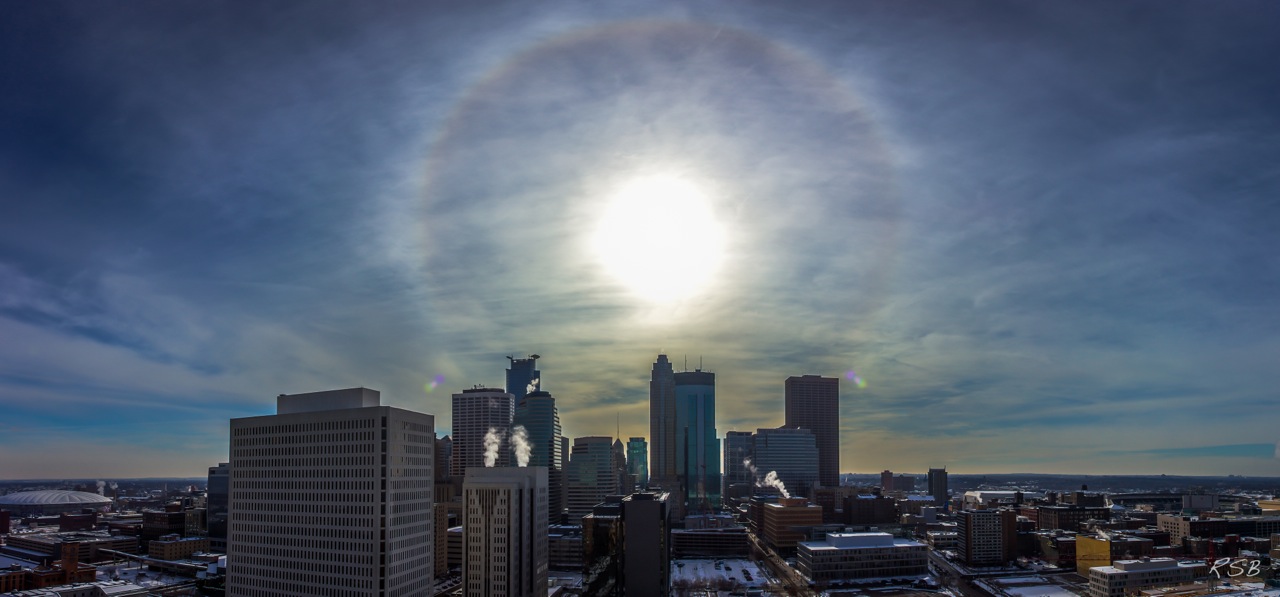 January Comes Early This Winter - Will It Last?
January Comes Early This Winter - Will It Last?"Winter winds sweep away the dead leaves of our lives" wrote Terri Guillemets.
Welcome
to the joyously stressful month of December: an impossible month of
malls, Christmas cards & company parties; trying desperately to keep
all the people in our lives happy - all the time.
Good luck with that.
Winter
is an apt metaphor for life: cold, occasionally soul-crushing obstacles
in your way, but even the most bitter of times eventually fade. That
and less yard work.
The next few days will be character-building;
some of the coldest weather of winter is brewing. Wave number one
arrives today with single-digit "highs" and a subzero windchill all day.
Sunday
morning still appears to be the coldest air temperature; waking up to
-15F in the metro. Plan on a brisk walk to U.S. Bank Stadium for the
Vikings game.
Models still bring another plowable snow into Minnesota
Friday - some towns picking up a half foot of powder with blowing and drifting into
Saturday.
Remember, cold storms are far more dangerous on the highways. When it's
this cold MnDOT chemicals have a very tough time melting ice.
22 degree halo photo: Steve Burns.
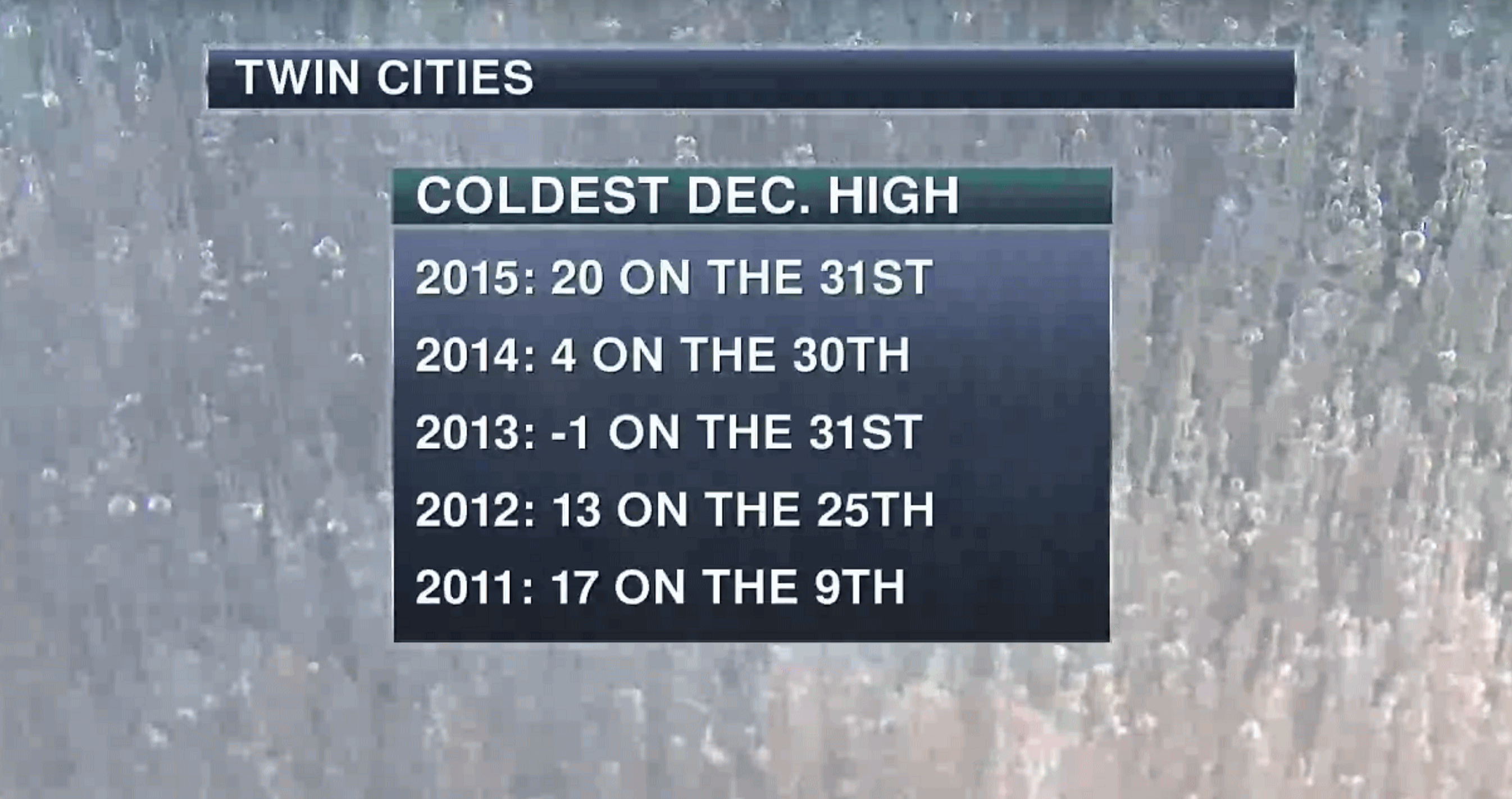
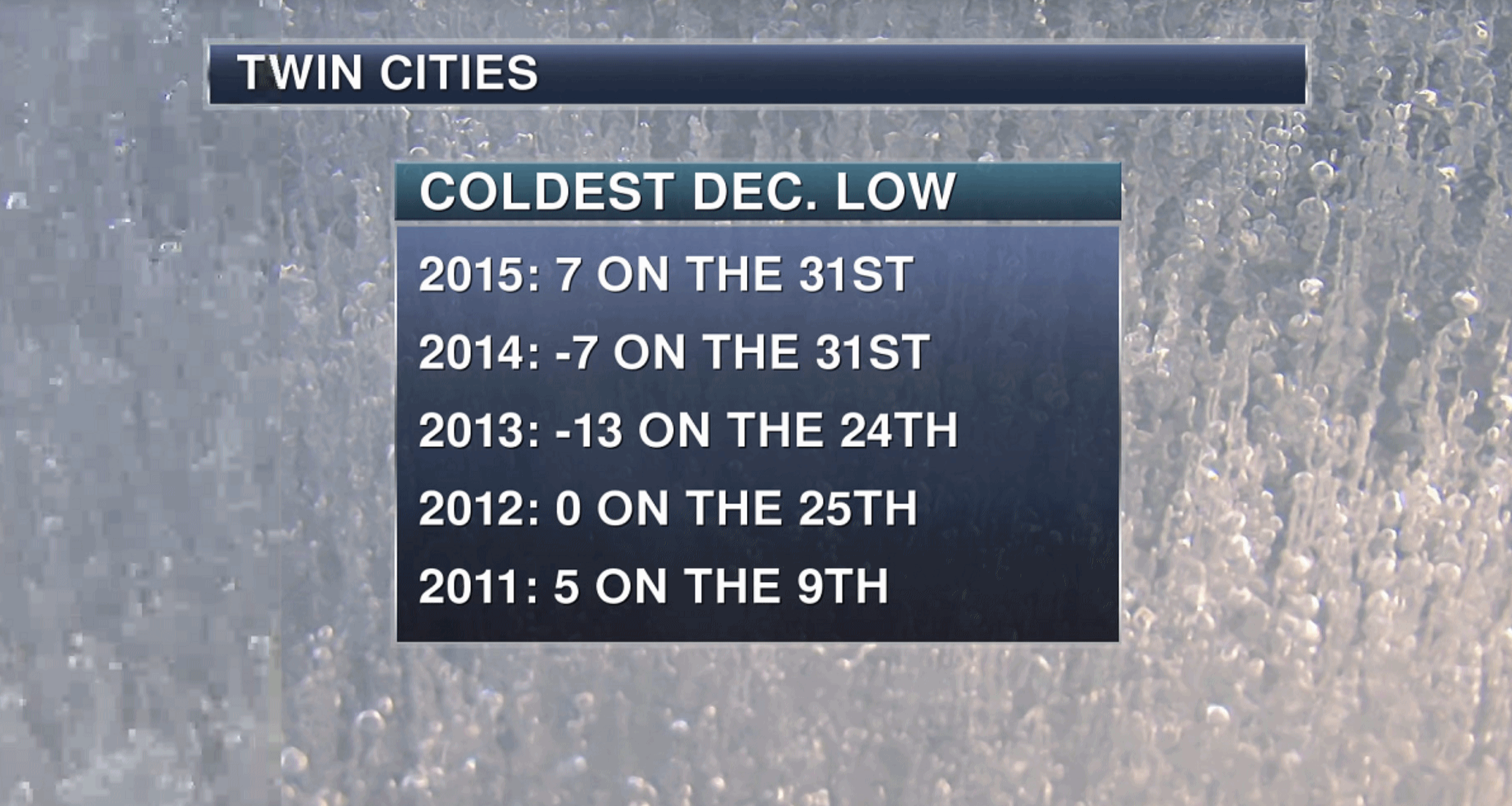 Tracking Decembers The Last 5 Years
Tracking Decembers The Last 5 Years.
The winter 3 years ago was the one that was like something out of the
1970s, a harsh "polar vortex" winter. Which is an oversimplification of
what really happened. Sunday may bring the coldest daytime highs and
lows in 20+ years for parts of Minnesota. MSP graphics: AerisWeather
meteorologist D.J. Kayser.
How To Protect Your Heart In A Season When It's Especially In Danger. The Dallas News has a must-read story: "
Not
to be the downer (which of course is precisely what it'll sound like),
but heart-related deaths rise 5 percent over the holidays. The reasons
vary. Research has shown that cold weather causes blood vessels to
constrict, which raises blood pressure, according to this story on webmd.com. Blood clots also form more easily, too. Plus, says Dr. Rafic Berbarie, assistant professor of cardiology at the University of Texas Medical Branch
at Galveston, people experience increased emotional stress, tend to
delay seeking medical care and overindulge in food and alcohol...
Brain Freeze: Is Winter Actually Good For You? Is this positive spin or is there really something to this? Here's a snippet from
Psychology Today: "...
Related research challenges
the notion that our brains slow down in the winter and that we aren’t
as mentally sharp. In fact, there is reason to believe that brain
function is enhanced during the winter. As we well know, expectations
shape reality. All those times I ascribed a patient’s sluggishness or
sadness to Seasonal Affective Disorder, what was I missing? What else
was going on in their lives that might have been affecting their mood or
energy level? It was so easy to chalk it up to SAD, which may just be a
“well-entrenched folk theory...”
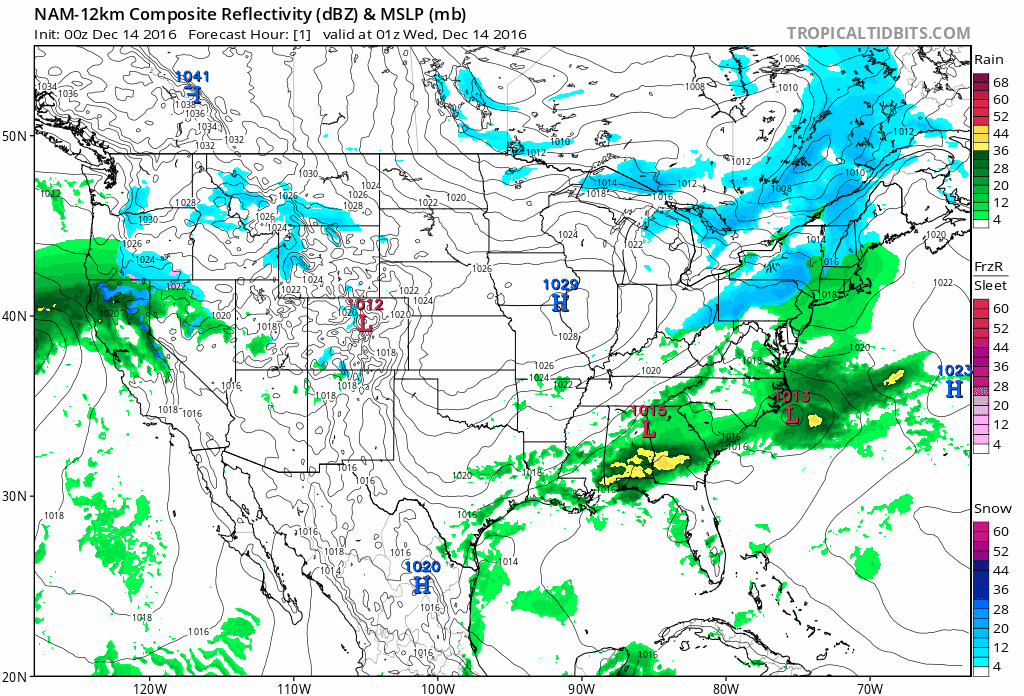 Late Week Midwestern Travel Woes?
Late Week Midwestern Travel Woes?
NOAA's NAM model, among otherrs, brings a storm across the Plains into
the Midwest Friday into Saturday with a shield of snow pushing from the
Dakotas into Minnesota and Iowa; tapering to flurries Saturday as
northwest winds increase. As the storm pushes heavy snow into the Great
Lakes and New England a counterclockwise wind flow will bring a shot of
frigid air, possibly the coldest of the winter into the Upper Midwest by
Sunday. Hourly NAM Future Radar: TropicalTidbits.com.
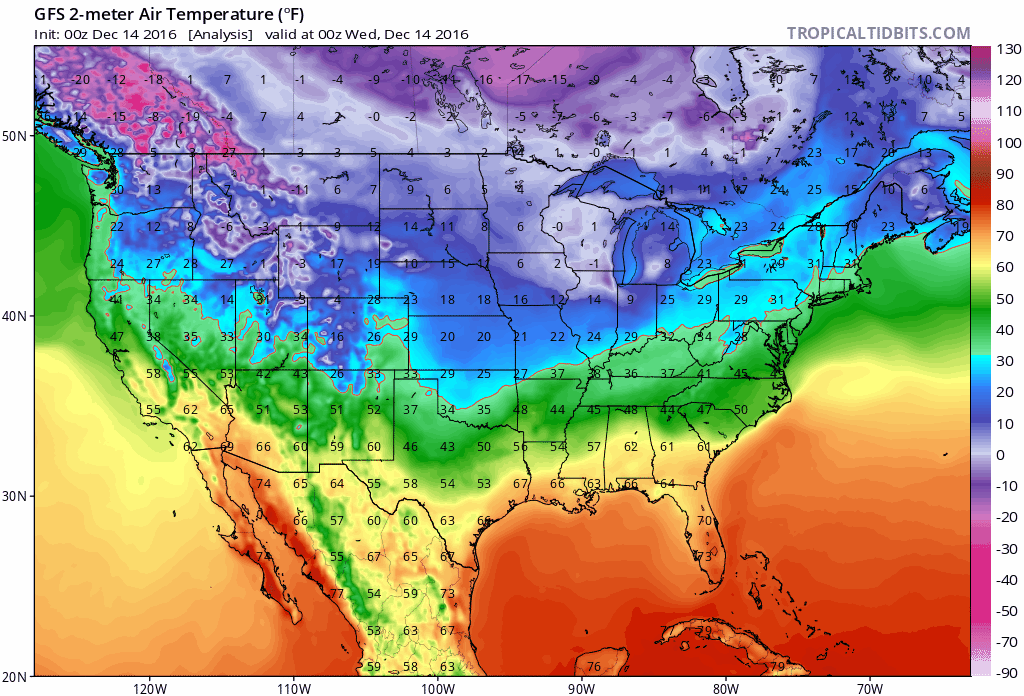 This Is Not a Test
This Is Not a Test.
The bad news: Sunday's blast won't be any ordinary, garden-variety
Canadian cold front. GFS data shows minus teens and minus 20s (air
temperature) across the Upper Midwest - dangerously cold. The good news:
bitter air won't last for long; a rapid warming trend sets in next
week.
More January Than December.
Models show surface temperatures in the immediate MSP metro dipping
into the -15 to -20F range by Sunday morning; even colder in the
outlying suburbs. Source: Aeris Enterprise.
Serious Wind Chills.
With air temperatures as cold as -20F early Sunday it won't take much
wind to whip up a chill factor as low as -30F, even -40F. My advice:
sleep in until Tuesday.
Mellowing Temperatures Next Week.
Every winter I'm consistently amazed how good 20s and 30s feel after a
spell of subzero weather. Some feeling should return to your fingers,
nose and toes next week, based on ECMWF guidance. Source: WeatherBell.
Late-Month Moderation.
I want to see a few more model runs, but GFS 500 mb predicted winds
looking out 2 weeks suggests a more zonal flow for the USA with
temperatures at or above average for late December. The question is not:
will we endure more arctic fronts. We will. The question is how
pervasive will bitter air be east of the Rockies? Will the polar vortex
weaken and break down, allowing subzero air to consistently flood south?
I'm still not convinced it's going to be nearly as numbing as it was 3
years ago.
Tracking the Statistical Odds of a White Christmas. And by "white Christmas" we mean at least 1" of snow on the ground; here's an excerpt from a
NOAA post: "...
Where
does history say you should be in the Lower 48 for the best chance of
seeing a white Christmas? Most of Idaho, Minnesota, Maine, Upstate New
York, the Allegheny Mountains of Pennsylvania and West Virginia, and, of
course, the Rockies and the Sierra Nevada Mountains all have a high
probability of seeing a white Christmas. And, Aspen, Colorado, is just
one of about a dozen locations boasting a 100% historical probability of
seeing a white Christmas. This map is based on the 1981–2010 Climate Normals,
which are the latest three-decade averages of several climatological
measurements. This dataset contains daily and monthly Normals of
temperature, precipitation, snowfall, heating and cooling degree days,
frost/freeze dates, and growing degree days calculated from observations
at approximately 9,800 stations operated by NOAA’s National Weather
Service. You can find the Climate Normals for locations near you by
using NCDC’s interactive map or search tool..."
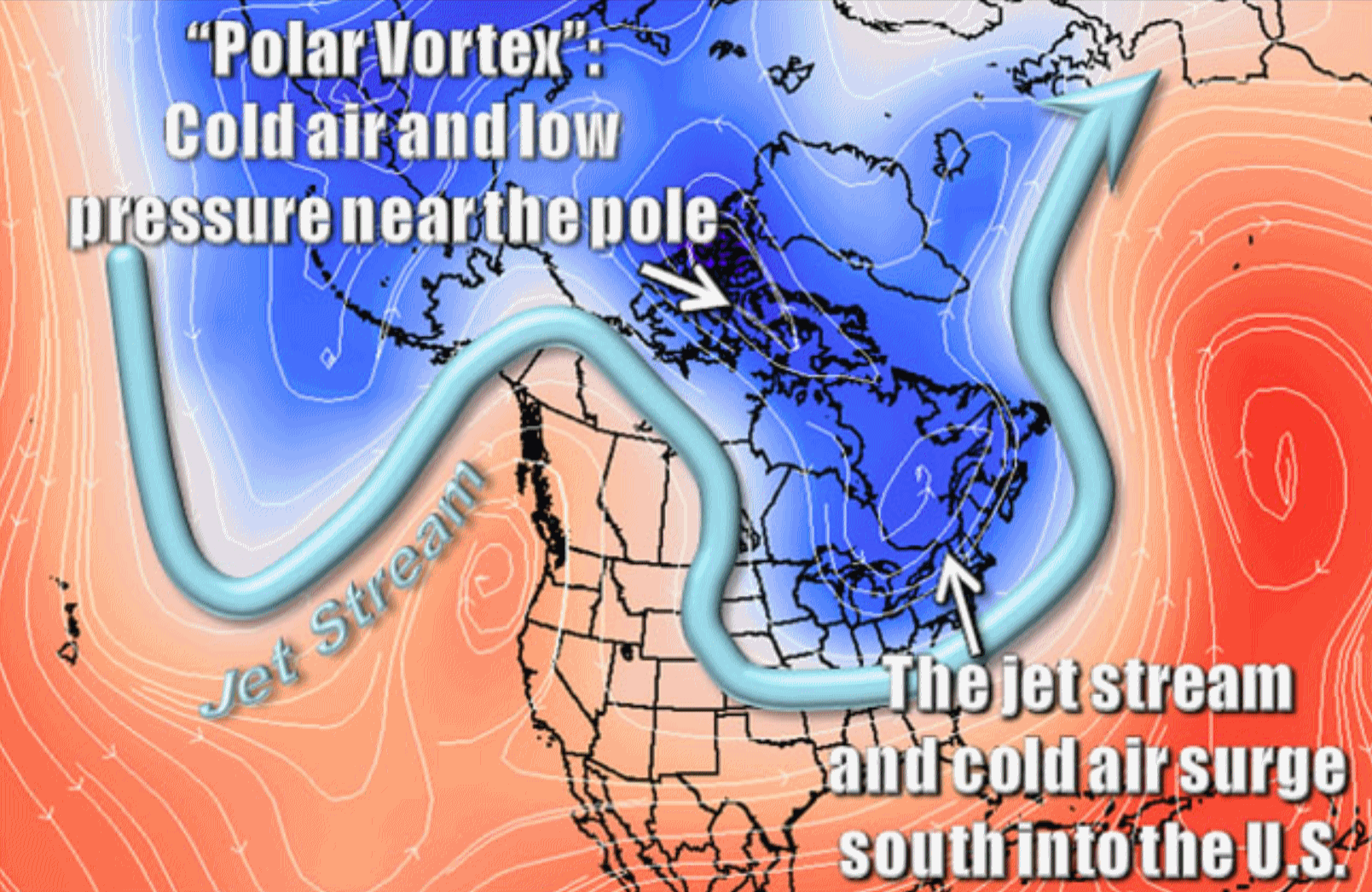 What Is The Polar Vortex?
What Is The Polar Vortex? NOAA has a very
good explainer, separating fact from hype: "...
The
polar vortex is a large area of low pressure and cold air surrounding
both of the Earth’s poles. It ALWAYS exists near the poles, but weakens
in summer and strengthens in winter. The term "vortex" refers to the
counter-clockwise flow of air that helps keep the colder air near the
Poles. Many times during winter in the northern hemisphere, the polar
vortex will expand, sending cold air southward with the jet stream (see
graphic above). This occurs fairly regularly during wintertime and is
often associated with large outbreaks of Arctic air in the United
States. The one that occurred January 2014 is similar to many other cold
outbreaks that have occurred in the past, including several notable
colder outbreaks in 1977, 1982, 1985 and 1989. There are several things
the polar vortex is NOT. Polar vortexes are not something new. The term
“polar vortex” has only recently been popularized, bringing attention to
a weather feature that has always been present..."
If Waffle House is Closed, It's Time to Panic.
FiveThirtyEight has a fascinating story (that made me hungry for waffles). Here's an excerpt: "...
The
concept of restaurant operations as an indicator of storm impact
percolated slowly into emergency-management culture — the magazine
Environment Health Safety Today wrote about it in July 2011 — and broke out into the open around the time of Hurricane Irene in August 2011 (when, according to The Wall Street Journal, 22 Waffle Houses lost power but only one stayed closed longer than a day).
But the so-called index isn’t actually an official metric. FEMA doesn’t
publish it anywhere; no one, except for Waffle House itself, counts how
many restaurants are running lean or forced to close. But the company
does give that count to the agency, and FEMA uses it — along with wind
speeds and power outages and other objective measures — to judge a
storm’s impact, and to figure out where its own crews and other
emergency responders can get fed..."
File photo credit: "A Waffle House on the beach in Gulfport, Mississippi, after Hurricane Katrina passed through the area." AP.
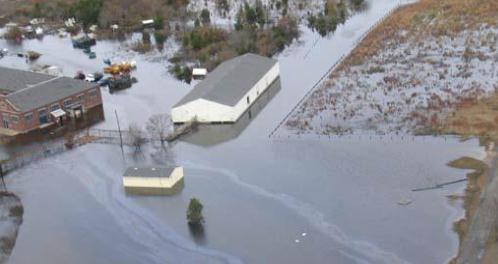 More "Mega-Rains", Tick Diseases On Tap for Minnesota, Report Says
More "Mega-Rains", Tick Diseases On Tap for Minnesota, Report Says. Details via
twincities.com: "...
The
report card singled out climate-related issues for the lowest marks,
saying Minnesota is warming more quickly than either the U.S. or the
global average. That’s meant more frequent extreme weather events, it
said, particularly “mega-rains,” when at least 6 inches of rain affects
more than 1,000 square miles. Minnesota has experienced seven of them in
the past 17 years, compared with four in the previous 27. Minnesota had
two of these events this year for the first time since records were
kept. “With more warming expected, Minnesota should be prepared for a
continued increase in these devastating storms,” the report said..." (File photo: NOAA).
4 Million Americans Could Be Drinking Toxic Water And Would Never Know. USA TODAY has researched the topic and has a harrowing report; here's an excerpt: "...
USA
TODAY Network journalists spent 2016 reviewing millions of records from
the Environmental Protection Agency and all 50 states, visiting small
communities across the country and interviewing more than 120 people
stuck using untested or lead-tainted tap water. The investigation found:
- About
100,000 people get their drinking water from utilities that discovered
high lead but failed to treat the water to remove it. Dozens of
utilities took more than a year to formulate a treatment plan and even
longer to begin treatment.
- Some 4 million Americans get
water from small operators who skipped required tests or did not
conduct the tests properly, violating a cornerstone of federal safe
drinking water laws. The testing is required because, without it,
utilities, regulators and people drinking the water can't know if it's
safe..." (File photo: ThinkStock).
We're At The Plans on Planet Earth, But We're Not In Control. Here's the intro to a poignant story at
The Washington Post: "
Gazing
over the countless transformations in Earth’s multibillion-year
history, I am struck by the unique strangeness of the present moment. We
suddenly find ourselves sort of running a planet — a role we never
anticipated or sought — without knowing how it should be done. We’re at
the controls, but we’re not in control. Climate change is the most
obvious example, but it is one of a large number of ways in which we are
modifying the planet. The scientific community is now converging on the
idea that we have entered a new phase, or epoch, of Earth history — one in which the net activity of humans has become a powerful agent of geological change, equal to the other great forces of nature that build mountains and shape continents and species..."
Photo credit: "
Apollo
8 Command Module Pilot Jim Lovell said from the moon, “The vast
loneliness is awe-inspiring and it makes you realize just what you have
back there on Earth." (NASA).
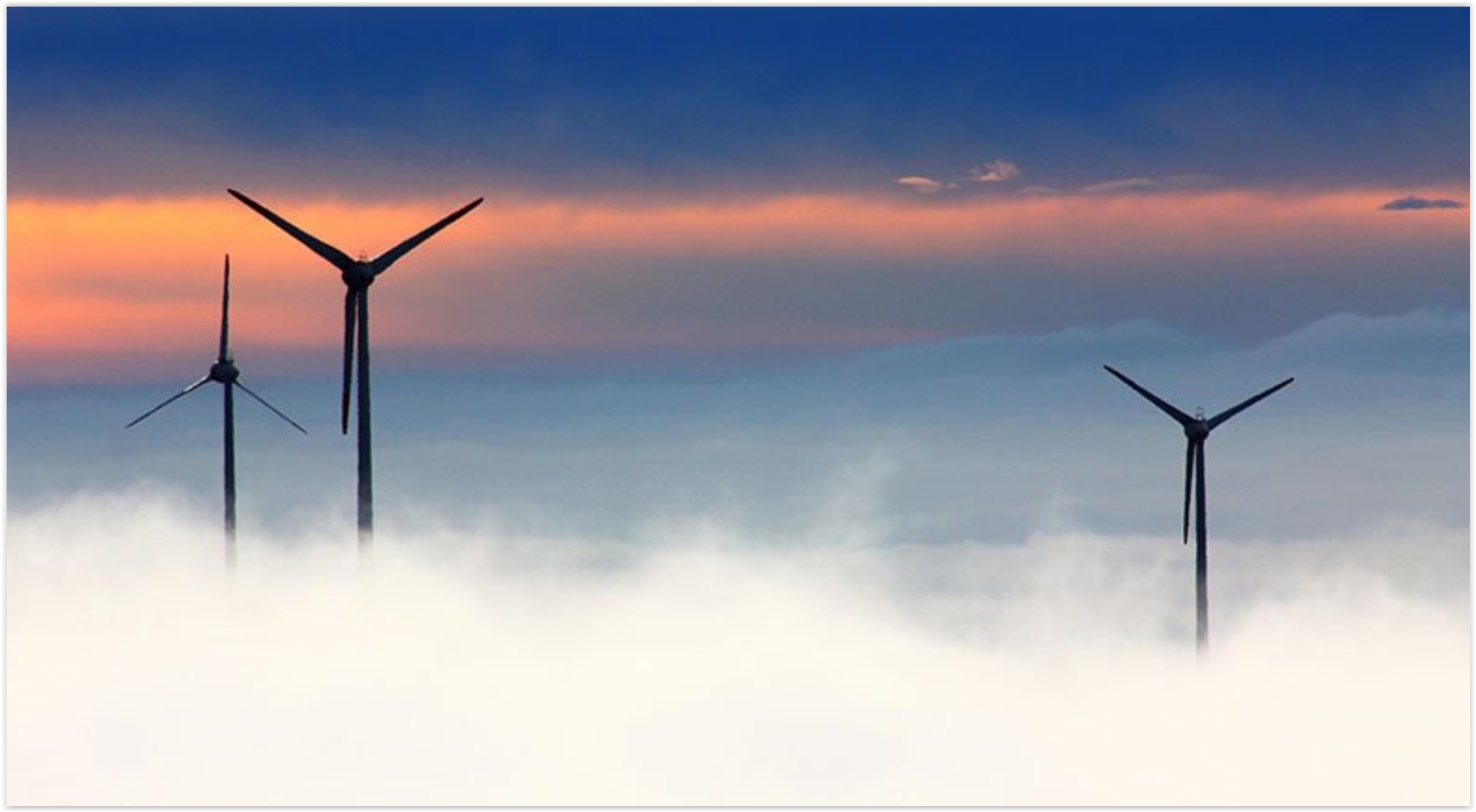 U.S. Wind Generation Sets New Records Throughout 2016. The trends are accelerating, according to Forbes: "
U.S. Wind Generation Sets New Records Throughout 2016. The trends are accelerating, according to Forbes: "...
More than a dozen wind integration studies
by US grid operators and others have found that wind energy can
reliably supply at least 20%-30% of the nation’s electricity, with some
studies analyzing wind providing 40% of total electricity on an annual
basis. The National Renewable Energy Laboratory’s Renewable Energy Futures study
found no reliability problems for a case in which wind and solar
provide nearly 50% of total electricity. If the recent records are any
indication, these levels are a real possibility in the future..." (File photo: CCL).
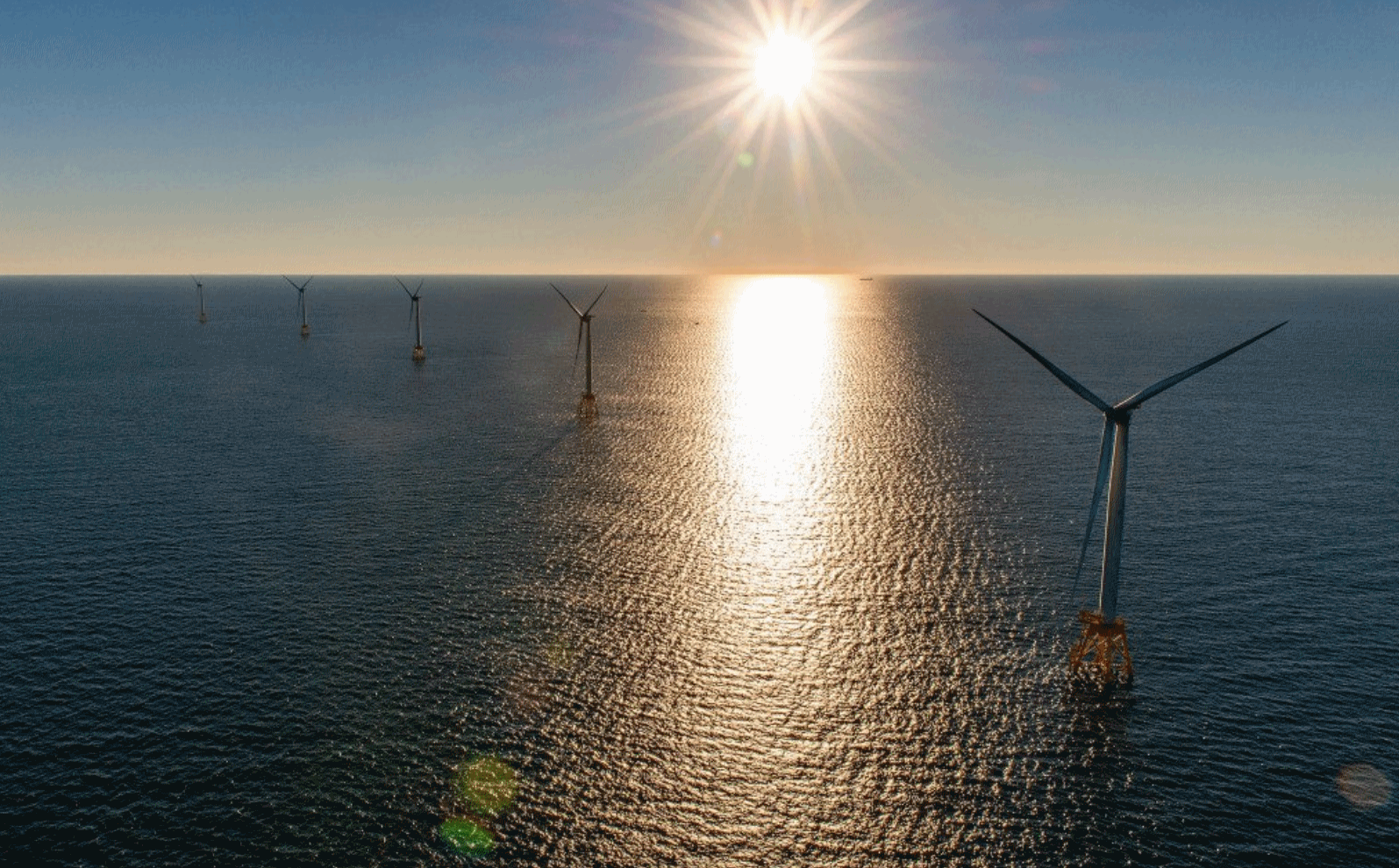 First U.S. Offshore Wind Farm Starts Operating Off Rhode Island. Here's an excerpt from The Portland Press: "The
Block Island Wind Farm, a 30 megawatt (or million watt) installment off
the Rhode Island coast, went into regular operation Monday – marking
the beginning of a bonafide new source of electricity in the United
States. Although countries like Britain and China have many of them,
this is the first fully operational U.S. offshore wind farm installment.
It comes just after the election of Donald Trump, who has tried to stop
an offshore wind farm that he said obscured the view from one of his
Scottish golf courses, and even as the Trump transition team at the
Department of Energy posed a controversial list of 74 questions to the
agency, including the following: “What is the Department’s role with
respect to the development of offshore wind?...
First U.S. Offshore Wind Farm Starts Operating Off Rhode Island. Here's an excerpt from The Portland Press: "The
Block Island Wind Farm, a 30 megawatt (or million watt) installment off
the Rhode Island coast, went into regular operation Monday – marking
the beginning of a bonafide new source of electricity in the United
States. Although countries like Britain and China have many of them,
this is the first fully operational U.S. offshore wind farm installment.
It comes just after the election of Donald Trump, who has tried to stop
an offshore wind farm that he said obscured the view from one of his
Scottish golf courses, and even as the Trump transition team at the
Department of Energy posed a controversial list of 74 questions to the
agency, including the following: “What is the Department’s role with
respect to the development of offshore wind?...”
Photo credit: "
The Deepwater Wind project, which sits off the coast of Rhode Island’s Block Island, went into regular operation on Monday." Photo courtesy of Deepwater Wind.
The Solar Industry Has Paid Off Its Carbon Debts. Here's an excerpt from
The Atlantic: "
Given
all the research, development, and production time that goes into
making any one panel, a skeptical solar-buyer might wonder: Has the
solar industry on the whole really saved any energy at all? To that
concern, a new analysis answers: Yes. The solar industry probably paid
off its long-term energy and climate “debts” in 2011, a study
published this week in Nature Communications finds. Since its inception
in 1975, the solar-panel industry has almost certainly prevented more
greenhouse-gas emissions than it emitted. It has also cumulatively
produced more energy than it initially required. In other words, the
solar industry is now likely historically carbon-neutral, if not
carbon-negative..."
Photo credit: "
A solar farm outside of the city of Les Mees in France." Jean-Paul Pelissier / Reuters.
Where Could Trump Find An Example of a GOP-Led Clean Energy Plan? Texas. The Dallas Morning News has a terrific Op-Ed that underscores market forces, not regulation, will win the day - it's already happening in Texas: "...Even
without a carbon tax, Trump could implement a successful,
Republican-led clean energy transition. And there's one place he can
turn for an example: Texas. Earlier this year, the Texas Clean Energy
Coalition issued a report by The Brattle Group that showed market
forces, not environmental regulations, are driving a clean energy
economy in Texas. The market is enabling natural gas and renewables to
provide all of the new power generation the state will need for the next
20 years, with no anticipated increase in wholesale power prices except
for inflation..."
Experts: States and Cities Will Lead on Renewable Energy. Here's a clip from
Midwest Energy News: "
A study
released Dec. 8 by the Brookings Institution furthers that argument by
showing that a majority of states have “decoupled” their economies from
carbon emissions, meaning their economies have continued to grow even
when carbon emissions were reduced. This
indicates that regulations, government programs and market forces that
curb fossil fuel dependency are not necessarily harmful to the economy,
as opponents frequently argue. And, the study authors say, state
policymakers should take this to heart while charting their states’
energy futures — which may not, as previously expected, be driven by
compliance with the federal Clean Power Plan..."
Symptoms of a Warming Planet: Reindeer Shrinkage. So reports
Popular Science: "
A
lack of food due to global warming could be causing reindeer to shrink,
according to new research. The weight of the average adult reindeer in
Svalbard, an archipelago in the Norwegian Arctic, has gone down by 12
percent in the last 16 years. "Twelve percent may not sound very much,
but given how important body weight is to reproduction and survival,
it's potentially huge," Steve Albon of the James Hutton Institute in
Scotland told the AFP. Hutton and his colleagues presented their
findings this week at a meeting of the British Ecological Society. The
researchers say this shrinkage has reached a critical point..."
File photo credit: Alexandre Buisse via
Wikimedia Commons
TODAY: Some sun, feels like -15F. Winds: NW 15-25. High: 6
WEDNESDAY NIGHT: Patchy clouds, feels like winter. Low: -9
THURSDAY: Cold start, at least the sun is out. Winds: SW 5-10. High: 4
FRIDAY: Plowable snow, blowing and drifting. Winds: SE 10-15. Wake-up: 1. High: 15
SATURDAY: Snow slowly tapers, very icy roads. Winds: NW 15-25. Wake-up: 8. High: 12
SUNDAY: Bitter start, sunshine helps a little.
Dangerously cold. Winds: W 8-13. Wake-up: -16. High: -3
MONDAY: Clouds increase, not quite as harsh. Winds: SW 10-15. Wake-up: -6. High: 18
TUESDAY: Mostly cloudy, milder Pacific breeze! Winds: SW 10-20. Wake-up: 10. High: 31
Climate Stories...
Shrinking Mountain Glaciers Are "Categorical Evidence" of Climate Change, Scientists Say. Here's the intro to a story at
The Washington Post: "
From
the rapidly melting Greenland ice sheet to increasing instability of
West Antarctica, the world’s glaciers have become the dramatic face of
climate change. But while ice loss at the poles often garners the most
attention (thanks to its hefty potential contributions to global
sea-level rise), other smaller glaciers all over the
world are also steadily shrinking — and scientists say they constitute
some of the clearest signals of climate change on the planet. A new study,
published Monday in the journal Nature Geoscience, uses a new
statistical method to analyze the retreat of mountain glaciers all over
the world, from Russia to South America. It concludes that their
shrinking represents “categorical evidence of climate change...”
Photo credit: "Tarpaulins
cover the Rhone glacier near the Furka mountain pass, Switzerland. The
glacier is protected by tarpaulins to reduce the melting of the ice." (DOMINIC STEINMANN/EPA).
The Arctic Just Received Its Annual Report Card, And It's Not Good. USA TODAY reports: "The
world’s air conditioner is on the fritz. Unprecedented, record-breaking
warmth in the Arctic this year triggered declines in sea ice, snow, the
Greenland ice sheet and a remarkable delay in the annual freeze of sea
ice in the fall. “Rarely have we seen the Arctic show a clearer,
stronger or more pronounced signal of persistent warming and its
cascading effects on the environment than this year,” said Jeremy
Mathis, director of NOAA’s Arctic research program, which released
its annual Arctic Report Card on Tuesday. Even more worrisome: The
trends are deepening and show no signs of letting up anytime soon. "All
signs point to continuing on this trajectory," Mathis said..."
The report from NOAA is available
here.
Scientists Want To Give The Atmosphere an Antacid to Relieve Climate Change. Eric Roston explains at Bloomberg: "...A
group of Harvard researchers led by David Keith, a professor of applied
physics and public policy, just proposed a different solution in the
Proceedings of the National Academy of Sciences. An aerosol of calcium
carbonate would have a similar cooling effect as sulfur dioxide on the
upper atmosphere and help protect the ozone layer as a bonus. The
approach is akin to giving the atmosphere a handful of antacid tablets.
The aerosol would block some incoming solar energy and neutralize
airborne acid particles that are bad for the ozone..." (File photo: NASA).
Climate Change Will Bring Wetter Storms In The U.S., Study Says. The New York Times has details: "Decades of research (and perhaps your own recent experiences on hot, humid days) have suggested that climate change will lead to an increase in big storms that cause flash floods, landslides and other natural disasters. Now, a new study
shows that such intense precipitation will most likely increase across
the continental United States, but with important regional variations.
The study by scientists from the National Center for Atmospheric
Research in Boulder, Colo., published on Monday in Nature Climate Change,
found that across the country, rainstorms may become more frequent and
intense if greenhouse gas emissions remain at current levels. The
biggest increase would be in the Northeast and the Gulf Coast..."
Photo credit: Brad Birkholz.
Atmospheric Levels of Methane, a Powerful Greenhouse Gas, Are Spiking, Scientists Report. Chris Mooney has the story at
The Washington Post: "
The best news about climate change that we’ve heard lately is
that for three years straight, the world’s energy-related emissions of
carbon dioxide, the most important greenhouse gas, have been flat. The
gas has continued to accumulate in the atmosphere, but emissions haven’t
gone up, even as economies have continued to grow. But now we learn
that there’s a major dose of bad news to accompany that: What’s true for
carbon dioxide is not at all true for methane, the second most
important greenhouse gas. Atmospheric concentrations of this gas — which
causes much sharper short-term warming, but whose effects fade far more
quickly than carbon dioxide — are spiking, a team of scientists reports
in an analysis published Sunday in the journal Environmental Research Letters..."
Graphic credit: NOAA.
Investment Funds Worth Trillions Are Dropping Fossil Fuel Stocks.
The New York Times reports: "
Investors
controlling more than $5 trillion in assets have committed to dropping
some or all fossil fuel stocks from their portfolios, according to a new report
tracking the trend. The report, released Monday, said the new total was
twice the amount measured 15 months ago — a remarkable rise for a
movement that began on American college campuses in 2011.
Since then, divestment has expanded to the business world and
institutional world, and includes large pension funds, insurers,
financial institutions and religious organizations. It has also spread
around the world, with 688 institutions and nearly 60,000 individuals in
76 countries divesting themselves of shares in at least some kinds of oil, gas and coal companies, according to the report..."
Photo credit: "
Climate
change campaigners at a demonstration in Paris in Dec. 2015. 688
institutions and nearly 60,000 individuals in 76 countries have divested
themselves of shares in at least some kinds of oil, gas and coal
companies, according to a new report."
Credit Rex Features, via Associated Press.
Once an Oil Executive, Now a Crusader Against Fossil Fuel Stocks. The New York Times has the story.
Study Explains Why People Self-Silence When It Comes to Climate Change.
The Centre Daily Times reports: "...
Called
“pluralistic ignorance,” the phenomenon presents itself when people who
believe in climate change believe that others around them do not.
Because we fear being perceived negatively, according to the research,
it leads to a self-silencing spiral. Ignorance, in other words, is
contagious. “What’s kind of interesting is that can potentially have the
ironic effect of creating further pluralistic ignorance,” Geiger said.
“So if people who are concerned about climate change don’t talk about
climate change, people aren’t aware of the degree to which others are
concerned...”




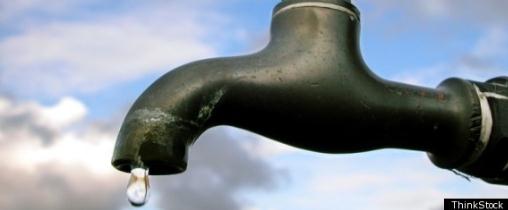
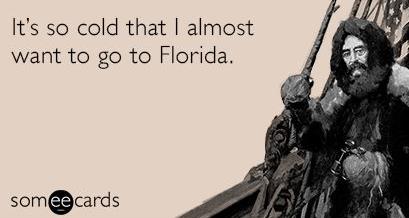

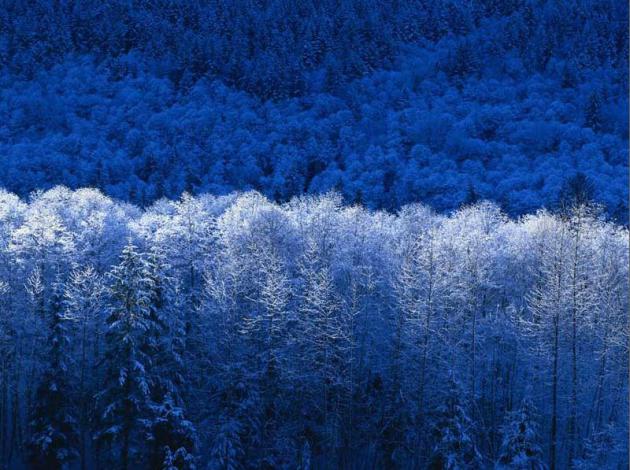
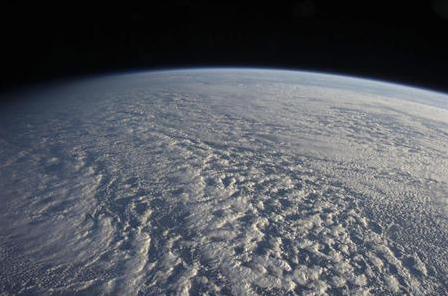
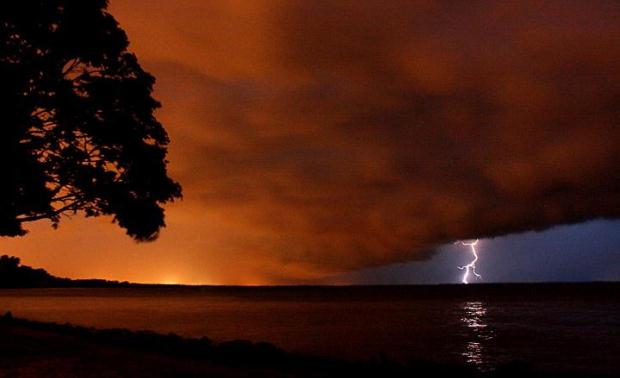
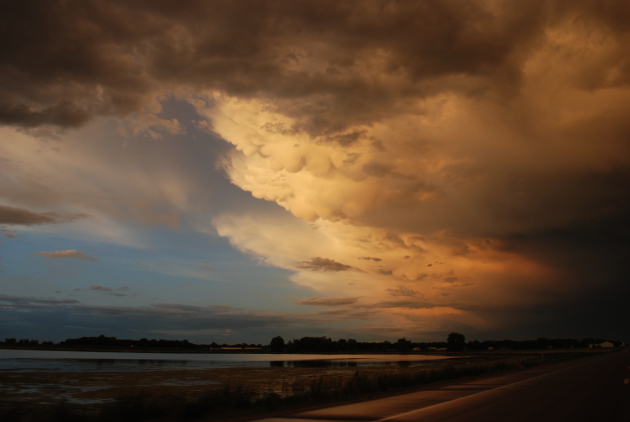
No comments:
Post a Comment